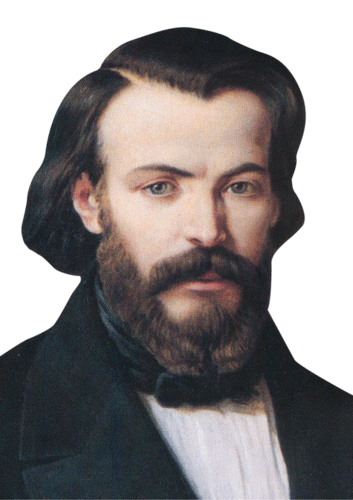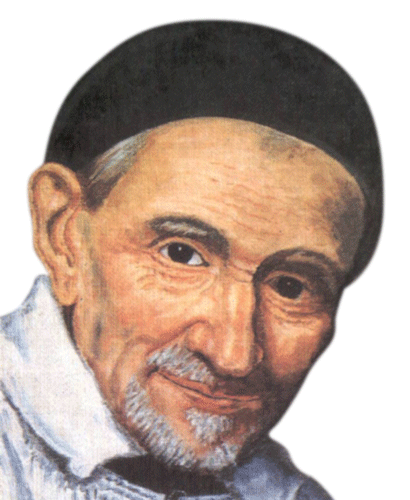Founder of the St Vincent de Paul Society

In the early 19th century Paris was profoundly affected by social unrest before and after the French revolution 1788-1799.
A new type of society was being formed - one based on liberty, equality and fraternity.
The 1830s brought the collapse of the old Bourbon monarchy which had dreams of strengthening the throne with the support from the Church. Religion was on the decline and atheism increasing; scepticism was virtually triumphant in the teachings of Saint Simon.
Large numbers of the country people were moving to the cities to find work in the factories. Many arrived to discover that there was no work, little pay or that the factories were closed due to revolution.
In 1832 an epidemic of cholera swept through Paris killing up to 1200 people each day. Large slums areas were forming in Paris; thousands of people lived without work, some without clothes, and many alcoholic. Homelessness, disease, and starvation were common.
A young student, Frederic Ozanam had to walk through the poorer suburbs on his way to university lectures each day and he soon became deeply moved at the hopeless state of families who had been left without the support of their breadwinners after the epidemic. It was the taunt of an anti-religious opponent in a debating society founded by the students that stung him to action:
Blessed Frederic Ozanam

"You are right Ozanam when you speak of the past! In former times Christianity worked wonders, but what is it doing for mankind now? And you, who pride yourself on your Catholicity, what are you doing now for the poor? Show us your works!"
Frederic Ozanam gathered a few friends around him and on 23 April 1833, they met to decide what they could do to assist the poor. After the meeting Frederic and his flat mate took the remainder of their winter wood supply and gave it to a widow. These young men attracted the comment "What can seven young men hope to achieve in alleviating the suffering of Paris?" Fortunately Ozanam paid little heed to their comments, determined to satisfy his own conscience that he was doing what he could to bear witness to his Christian upbringing by assisting those less fortunate in the community.
The small group decided to adopt the name The Society of St Vincent de Paul after the Patron Saint of Christian charity. They sought the advice of Sister Rosalie Rendu, a Daughter of Charity who was visiting poor families in one of the poorer districts. Sr Rendu introduced the young men to people they could assist. They agreed to meet weekly to strengthen their friendship and to respond to the needs of those they served.
It was not long after that other good citizens of Paris took note of the charitable works of the students. Within a year membership had expanded to 100 and it became necessary to split the conference (group) into three separate conferences. At the same time other conferences sprang up in Parishes around Paris. In its first decade the Society spread to 48 other cities in France and Italy and numbered over 9,000 members. After some years the Society reached Rome (1842), England (1844), Belgium, Scotland, Ireland (1845) and the United States of America (1846).
Until 1963 women were organised separately throughout the world as the 'Womans Society of St. Vincent de Paul', with headquarters in Bologna, Italy. It was founded in 1856 to render charitable aid to the afflicted in matters which men could not handle such as the care of widows, orphan girls and mothers with small families. After a trial period the women's Society was amalgamated with the men's Society in 1967. Internationally the Society now admits both men and women with equal responsibility.



